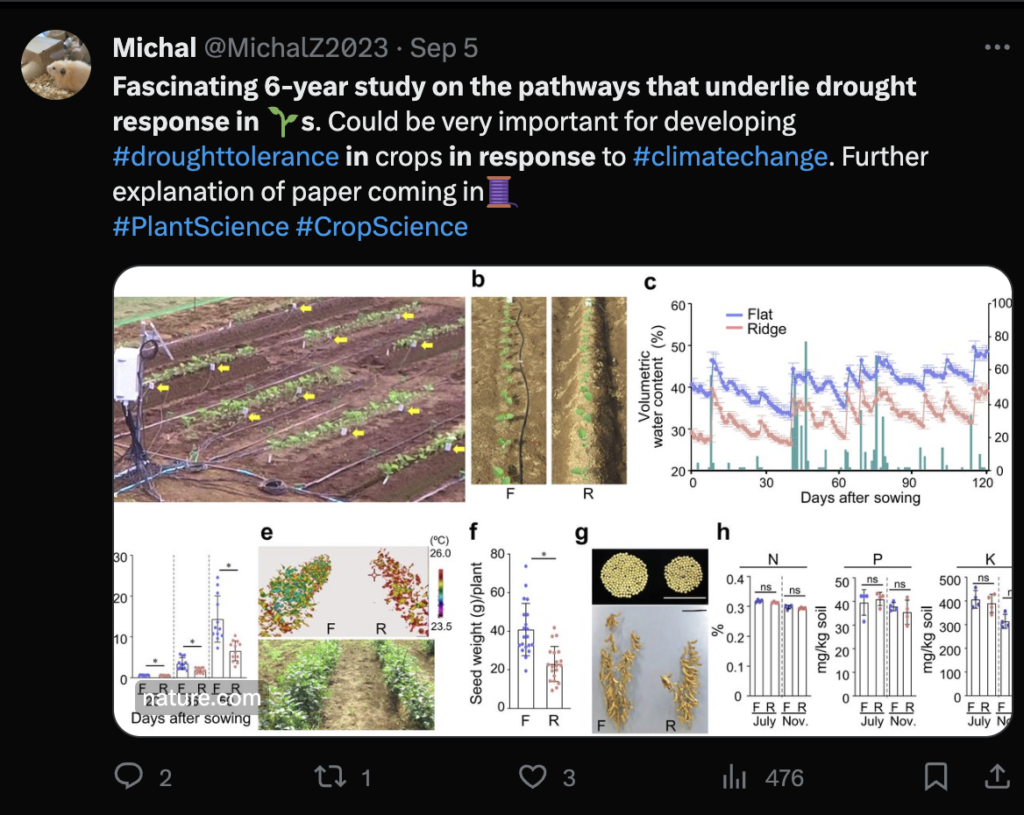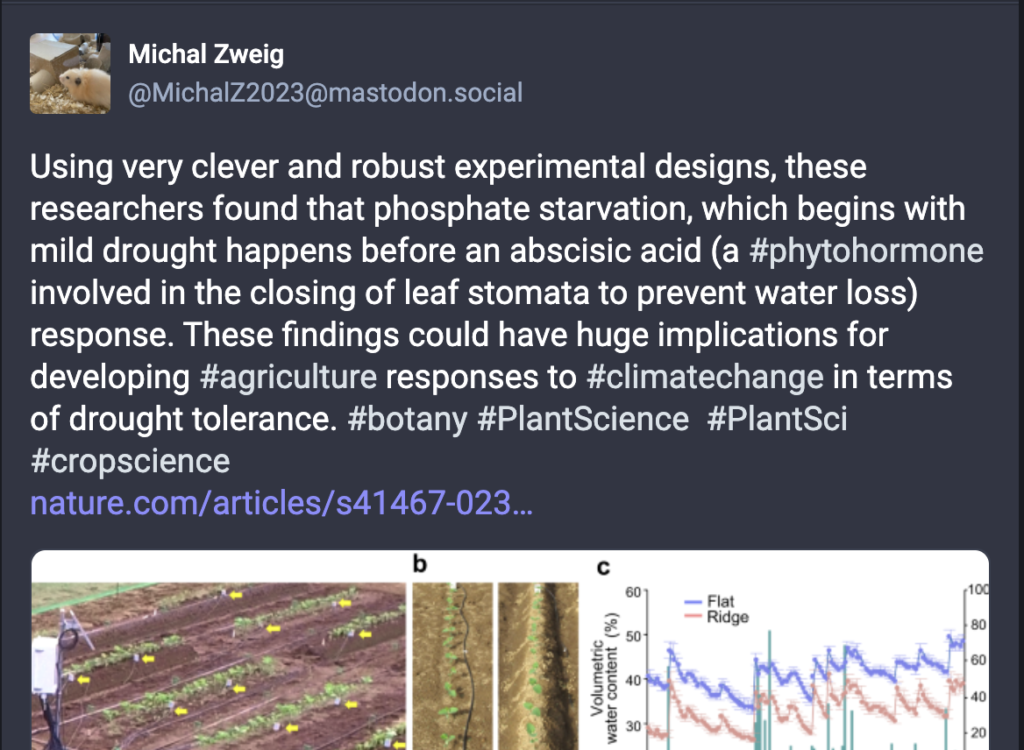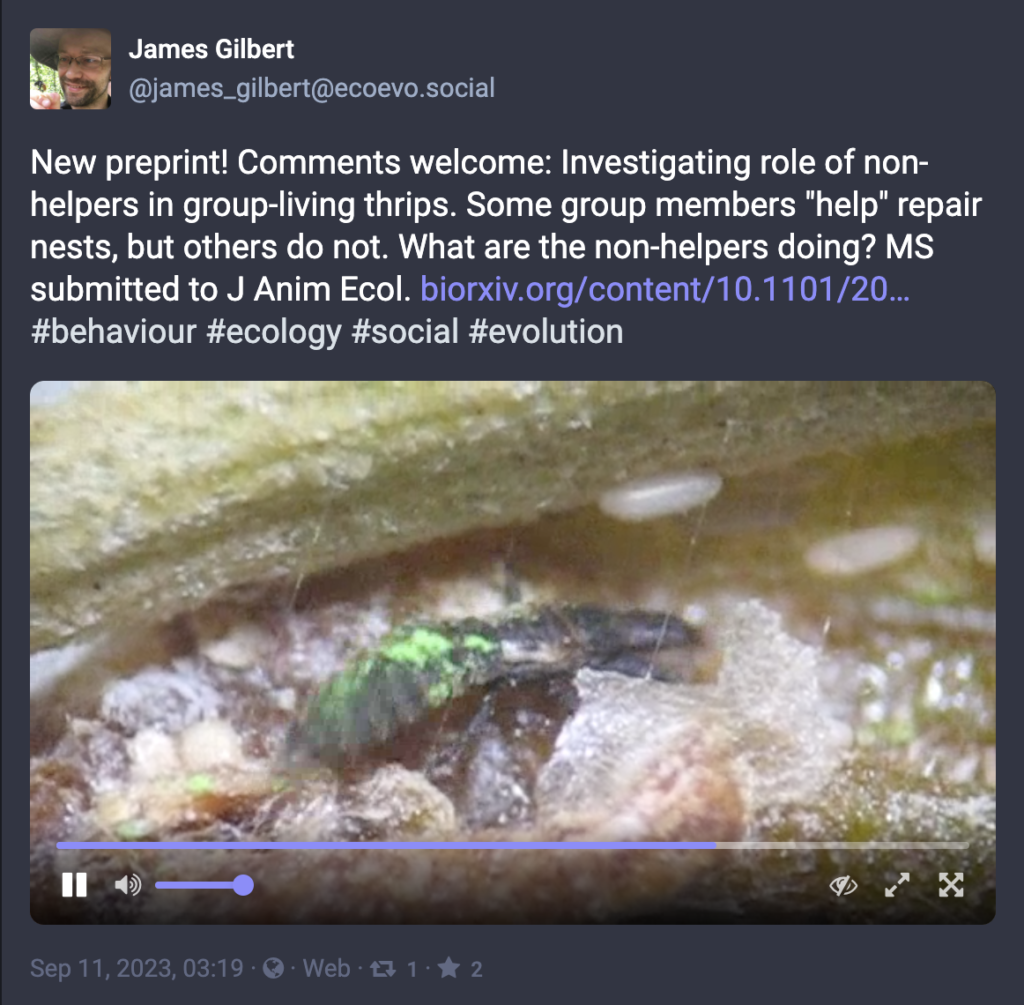5 Ways to Use Social Media to Your Advantage
1. Follow the right players to learn and stay informed.
With a little effort, you can use social media platforms like Twitter or LinkedIn to stay informed about conferences, publications, grant opportunities, open job positions, and training courses or workshops that might be of relevance to you. Researchers, organizations, and institutions often promote their work and share their expertise on these platforms. The publicity gained through social media helps them increase the reach of their work and thus open themselves up to more opportunities for funding and collaboration.
Following your colleagues, co-workers, collaborators, researchers and/or research groups of interest, as well as major players such as journals, institutes, societies, and research centres will help fill your feed with relevant media that could enrich your work. Following hashtags (most important on Mastodon) or feeds (most important on BlueSky) relevant to your work such as #metabolomics or #plantphysiology could help diversify your feeds and ensure you see media from outside your network bubble.
However, depending on the platform, you must be aware of the content algorithm and be sure not to like too much content that might cause your feed to become overwhelmed with time-wasting, irrelevant, or unprofessional content that could drown out the content you want to see. This is particularly important on Twitter/X, Instagram, and Facebook, but not relevant on Mastodon.
2. Engage directly with the public and potential collaborators
Direct access to the public can help scientists reach home gardeners or small-hold farmers who have had their crops harmed by the plant pathogens they’re researching. Speaking to these individuals could help scientists formulate new research questions or draw better conclusions from their work.
Every scientist on social media is a potential collaborator; reaching out to fellow researchers may mean that more resources will be available to you for experimentation or that you could help others develop their work, and get an authorship on a paper being written at another institution.
Replying to posts or commenting, asking for opinions on public posts, making public polls, using hashtags (see item No. 4), various SubReddit forums, and Facebook groups are all tools that could help with this.
3. Promote yourself by posting regularly
Content algorithms typically aim towards garnering the most activity possible, this means an inactive account is less likely to be helped by the content algorithm than an active one. Thus, active accounts are more likely to be recommended to follow and the posts from active accounts are more likely to be promoted onto feeds. Of course, this doesn’t mean you should be constantly bombarding your followers with content so that they can’t easily find important posts, like an interesting paper you recently published and shared, on your profile (though, if there is a post you would like everyone who views your profile to see you can use the “Pin to your profile” feature, so it will always be the top post), but that you should aim to post more frequently than only when you want to promote your own work.
Regular activity doesn’t have to mean you’re always posting new and exciting content, but interacting to add value to the scientific community and support colleagues, for example by reposting or liking posts that you think deserve more attention and could benefit people you follow, you can even repost something and tag a specific colleague who might appreciate the post. The engagement with the post, in turn, helps the post get promoted by the content algorithm.
4. #Hashtags widen your post’s audience
Hashtags categorise your posts and when a hashtag is searched, all the posts categorised with that #hashtag show up. Additionally, anyone who follows a hashtag, will have the posts categorised with that hashtag on their feed. This helps increase the audience and general visibility of your posts because it means users, besides those who follow your account, are going to see the post. Hashtags are particularly important on Mastodon, which lacks an algorithm, and for sorting posts into specific feeds on BlueSky. By contrast, on algorithm-driven platforms such as Twitter/X, too many hashtags can make your post too long––the conventional wisdom here is two hashtags/post. Below is an example of how hashtags can be applied in a Twitter (rebranding to ‘X’) post. While the use of the hashtags as part of the words in a sentence is a good way to conserve characters in the post, the #climatechange might have been too gratuitous because the article being promoted was not about climate change. The hashtag sorted it into a category that is less relevant to the content of the post therefore more ignored by users who come across it using the hashtag, thus decreasing the content algorithm’s likelihood to promote the post. Additionally, this user-written guide on how to effectively use hashtags on Twitter suggests that two hashtags should be the maximum per post.
Below is the same post made on Mastodon. What is interesting here is that the use of the #climatechange hashtag helped the engagement of the post, as it was boosted by a professor who studies the effects of climate change and favourited by a professor of environmental history due to the tag.
Alternately, on BlueSky Social, while more hashtags could be used, because there is so much less content and the userbase is so small, the same post would only need the #PlantScience hashtag for it to get sorted into the Plant Science Research feed and seen by all relevant users.
5. Visual media draws attention to your posts
If you use a picture (or a video), users who come across your post will know something about your post before they’ve read the text. This is especially important on platforms like LinkedIn where users often write long and wordy posts. However, a video or high-quality picture will also make a post stand out on a busy feed, and thus, will encourage engagement. Most people who view the posts below will know it’s about insects just from playing the video, without reading any of the text. Additionally, the video would help an individual who doesn’t know what thrips are understand the post and the paper that was linked better.
We hope this list has provided helpful advice for how social media can help you stay informed, develop beneficial relationships for collaboration, and promote your work. Let us know if this list was helpful by tagging @MichalZ2023 on Twitter/X or Mastodon, or @michalz on BlueSky Social. Alternatively, you can also tag @PlantEditors on Twitter/X, Mastodon, or BlueSky Social if you would like to see more content like this on the website.



